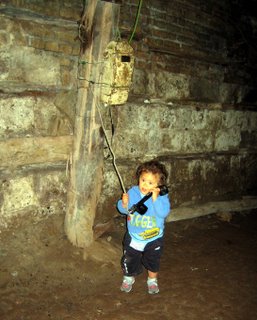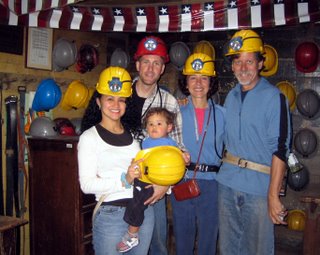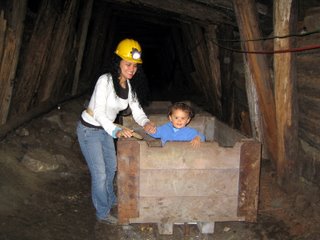 It may seem a little unusual to take a day trip to a coastal town and then spend half the time underground in a coal mine, but that’s what we did. La Costa del Carbon (coast of coal) is a stretch of coastal towns that were built around the coal mining industry that began to thrive in the region in the 1840's. Though the mines officially closed in the late 1990’s, the coal industry had been in decline for several decades leaving the people with little livelihood. The Chilean movie Sub Terra highlights the sad exploitation of the generations of miners in this area whose lives revolved around coal. (If you haven’t seen the movie, we highly recommend it).
It may seem a little unusual to take a day trip to a coastal town and then spend half the time underground in a coal mine, but that’s what we did. La Costa del Carbon (coast of coal) is a stretch of coastal towns that were built around the coal mining industry that began to thrive in the region in the 1840's. Though the mines officially closed in the late 1990’s, the coal industry had been in decline for several decades leaving the people with little livelihood. The Chilean movie Sub Terra highlights the sad exploitation of the generations of miners in this area whose lives revolved around coal. (If you haven’t seen the movie, we highly recommend it).  Lota, the town we visited, has turned one of the most notorious mines, El Chiflón del Diablo (Wind of the Devil), into a historic attraction with some of the unemployed miners as the guides to their former world below. We made our way to Lota, located an hour and half drive south from San Pedro de la Paz, with our friends Dan & Catherine (another Fulbright teacher from Portland & her husband).
Lota, the town we visited, has turned one of the most notorious mines, El Chiflón del Diablo (Wind of the Devil), into a historic attraction with some of the unemployed miners as the guides to their former world below. We made our way to Lota, located an hour and half drive south from San Pedro de la Paz, with our friends Dan & Catherine (another Fulbright teacher from Portland & her husband).  We were a bit skeptical of taking the mine tour, but the miners’ sincerity and spirit convinced us it would be an interesting experience. They didn’t disappoint us. With Nathan at our side, the 5 of us along with our guide descended down the mine shaft 130 ft in the elevator bucket to the labyrinth below. Telling his stories of the conditions, his experiences and the often tragic history of this infamous mine, he lead us through the old mine tunnel that burrowed under the sea.
We were a bit skeptical of taking the mine tour, but the miners’ sincerity and spirit convinced us it would be an interesting experience. They didn’t disappoint us. With Nathan at our side, the 5 of us along with our guide descended down the mine shaft 130 ft in the elevator bucket to the labyrinth below. Telling his stories of the conditions, his experiences and the often tragic history of this infamous mine, he lead us through the old mine tunnel that burrowed under the sea.  It was strange to think that we were
It was strange to think that we were walking in a hole under the roaring ocean or more importantly that people worked in these primitive conditions with few safety measures. Mining anywhere in the world is a dangerous occupation, but these men (and boys as young as 9 years old) sacrificed a lot for very little.
We finished our day in Lota wandering through the Parque Botánico de Doña Isidora Goyenechea, a beautiful natural park perched on top of a small peninsula overlooking the coast. The park is well maintained and stocked with native plants and trees from Chile and surrounding South American countries. The views of the fishing bay and rugged coastline were spectacular. Listening to the neotropic cormorants (Phalacrocorax brasilianus) socializing in the large trees perched over the cliff, we watched the sun disappear over the Pacific and pondered how fortunate we are.

